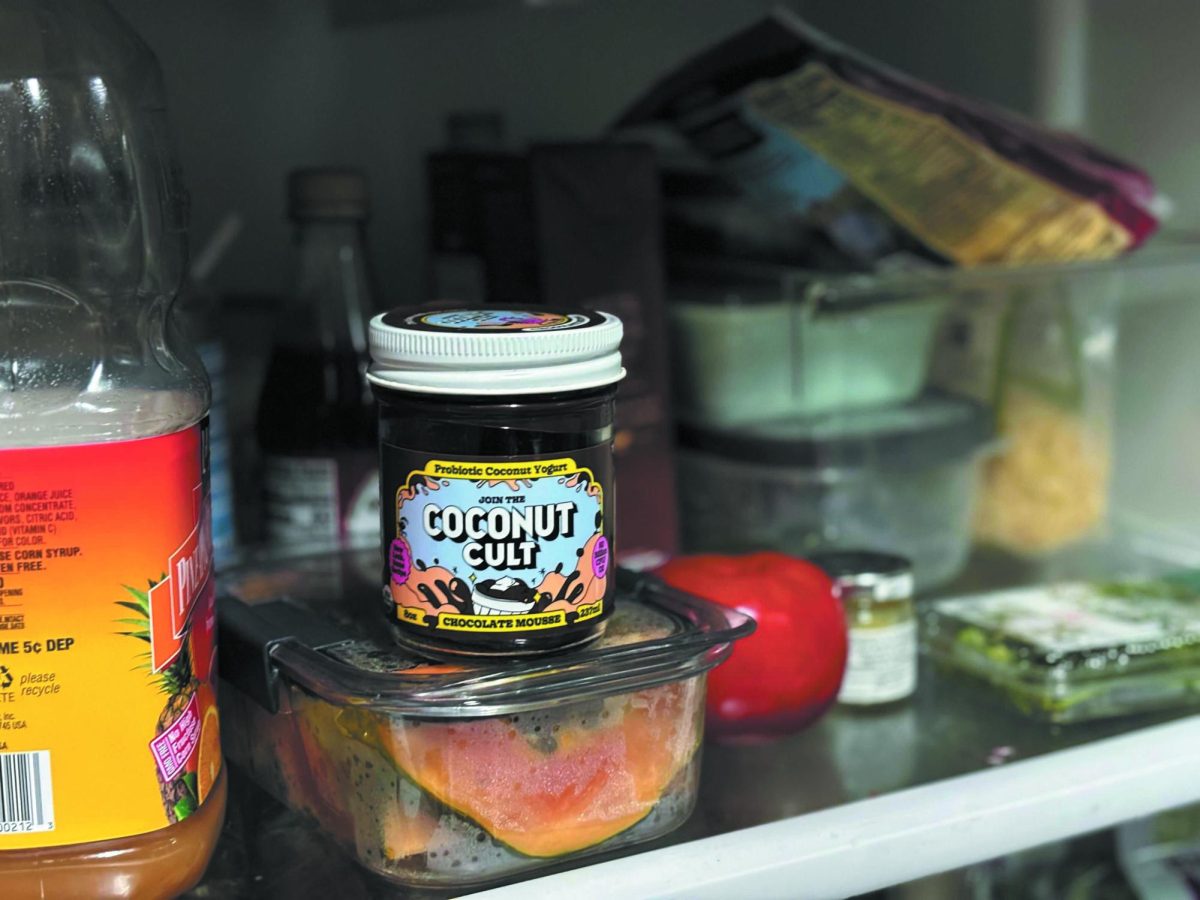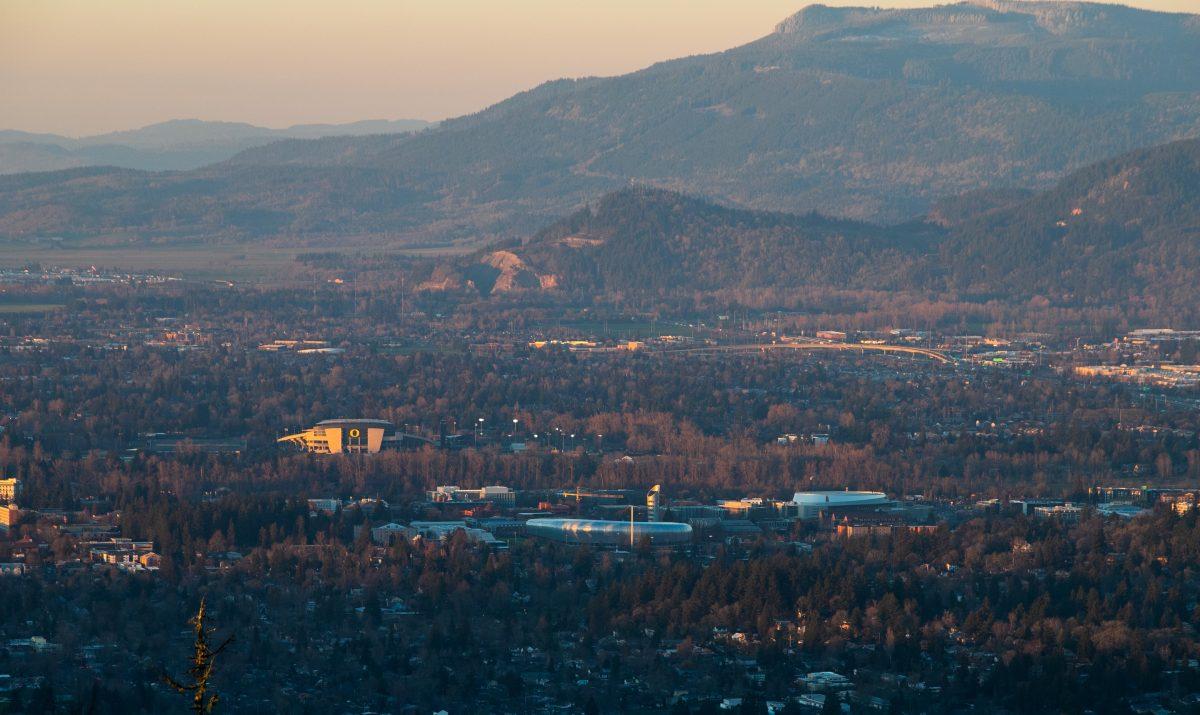Opinion: It’s time to look closer at the American food system. No more ignorance.
———-
As I write this article, I’m eating a peanut butter and pickle sandwich, an orange, a handful of sea salt and vinegar chips and an exorbitant amount of watermelon for dessert. Except for the pickles (hailing all the way from Boston), I’m patting myself on the back for eating only things from the West Coast. The peanut butter comes from Washington, the orange from California and everything else is from Oregon. The bread is particularly local, made fresh at the grocery store near my apartment. I never used to be a nut about researching the origins of my food, but after taking a course on environmental ethics —ENVS 345 — I think it’s something everyone should take the time to do.
Given that we’re all living beings, it’s safe to assume that eating is an essential part of your day, regardless of how it fits into your schedule. Maybe you look forward all day to savoring a fancy meal you cooked from scratch. Maybe you’re at the stage in your life where getting up just to eat peanut butter out of the jar feels like an accomplishment. Maybe you’re like me, and you pretend that adding chopped garlic to instant ramen counts as cooking. Regardless, when was the last time you took the time to figure out where your food comes from?
I don’t just mean researching the location where each company you buy food from is based. This information is usually readily available and still important to find, especially since food miles (the distance food travels from where it is grown/produced to your home) impact climate change.
However, food often travels much further than you might guess, so just the information on the brand’s headquarters isn’t necessarily enough. Some estimates point to an average travel distance of nearly 1500 miles for conventionally grown food. It’s much harder to find the total distance your groceries have traveled, but it’s worth it to try. And, of course, locally-grown produce doesn’t have this issue. Check out the farmers market for some great options!
As harmful as long travel distances for produce can be, America’s factory farming system is almost unquestionably worse. Packaging from big brands is often deceptive, depicting happy animals frolicking in wide-open meadows with no cages in sight. As it tends to be, the reality is considerably darker.
Factory farming refers to the practice of raising animals for meat in confined spaces, prioritizing profit over humane treatment. Many of these animals have specifically been bred to be larger over the years, often at the cost of their health. They cannot move at all for most of their lives, crammed into tight cages and pens before they’re killed. The system is also cruel to slaughterhouse workers, who experience physical and mental distress while on the job.
Thankfully, some smaller local farms still produce food ethically, even animal products. One of the highlights of my environmental ethics class was our field trip to the Deck Family Farm in Junction City. As a lifelong vegetarian, I initially dreaded the trip but it opened my eyes to how meat production can actually be humane and ethical.
Hearing directly from the family about their work and lives, it was clear that they truly cared about the animals and their wellbeing. They were adamant about providing their animals with decent living conditions and using every part of them when they were killed to prevent waste. Though the cruelty of profit-driven factory farms can be staggering, it’s important to remember that it’s not entirely hopeless. There are still people doing the right thing.
For those unable to visit and learn about a local farm, independent online research is still a vital step. It can be daunting to start learning the origins and ethics of the food you consume, but UO Professor and Ethics Minor Director Erin McKenna believes it can be made easier by starting with a few issues that especially concern you.
“Researching one issue usually leads one to start to see the web of ethical concerns related to everything we eat,” McKenna said. “This then gets us all thinking — every day.”
She recommends the Cornucopia Institute as a helpful resource. The website provides scorecards for various types of foods (think cottage cheese, granola bars, etc.) and gives information such as organic status and parent company of the brands that make them.
“One may find a brand that addresses many of their ethical concerns but not know that that brand is owned by a larger corporation with a bad record on those same concerns,” McKenna said. “One may find a label that seems to assure them that certain practices are not taking place, but unless there is third-party verification, it is hard to know if one can trust the label.”
Unethical food practices are often hidden well by the companies that rely on them, and taking the time to dig into the issues thoroughly is the only way to be sure about what you’re eating.
Learning the truth about the American food production system doesn’t mean you need to change your consumption habits overnight –– if you decide to make a change at all. In a society that’s so influenced by big corporations, it can be incredibly difficult to find fully ethical options at the grocery store. I remember going shopping one night and having a mini crisis in front of the eggs after finishing my ethics class.
That said, it’s essential to at least be aware of the truth. Really take the time to consider how your food was grown, prepared and transported so you can make informed decisions when you shop. “We tend to value cheapness and convenience above all else. These come at a great cost that is often not visible unless one wants to look,” McKenna said. It may not be a pleasant reality, but we have no excuse for ignoring it.
Tresnit: Confronting the origins of your food
September 28, 2023
A freshly stocked pile of tomatoes welcomes customers to take some fresh produce home. (Jonathan Suni, Emerald)
0
More to Discover
About the Contributor
Sadie Tresnit, Opinion Columnist









